Best cutting boards in 2025: tested and rated
Here are the best cutting boards to make cooking prep a breeze
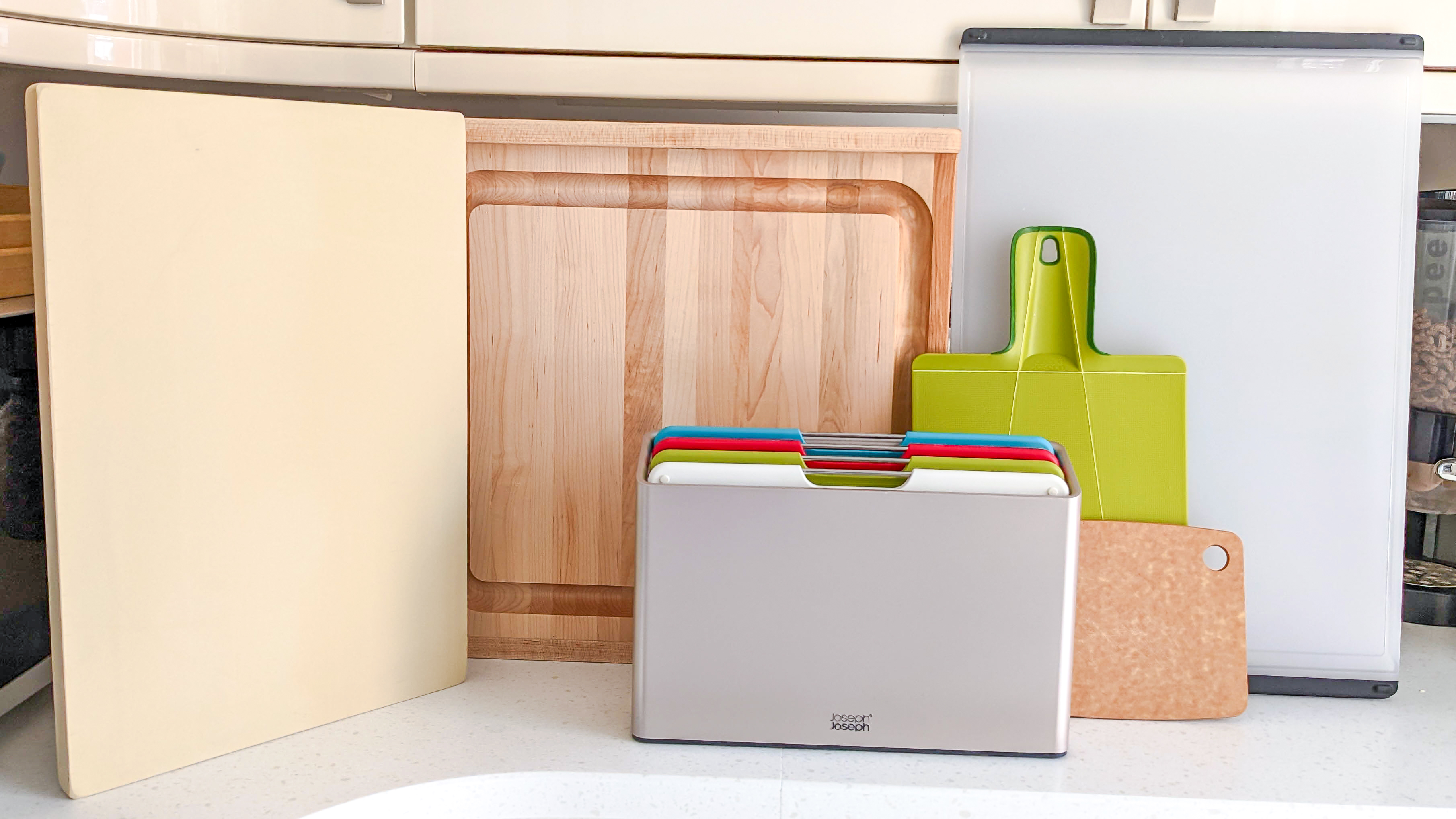
Apart from owning sharp knives, there’s one other piece of kitchen equipment you can’t do without. Owning one of the best cutting boards is an essential piece of kit in any kitchen. In fact, I’d recommend owning a few to keep your freshly sliced bread from being tainted by the smell of freshly sliced onions and keep it veg-free from bacteria from meat.
So, whether I’m preparing apples for a homemade fruit pie, dicing meat and veg for a casserole, or preparing sandwiches for a quick snack — I always rely on a range of chopping boards.
But not all chopping boards are the same. From years of experience cooking for my family, I know that when you get behind a knife, all cutting boards feel different. And you don’t need to be a professional chef to benefit from using a cutting board in the correct size and material to suit the task, be that wood, bamboo, plastic, rubber or marble.
To help you battle through the options of what’s available, we’ve gathered the best of the bunch and recommend Oxo Good Grips Carving and Cutting Board, as the best for versatility. It even has a drip catcher for liquid run-off, similar to Ikea’s Lämplig Chopping Board, which weighs in at 6lbs but offers good value for a wooden board. And because I like using a range of boards for different tasks, I particularly favor the Joseph Joseph Folio set of Chopping Boards — giving the option to prepare different food types on individual cutting boards.
The quick list
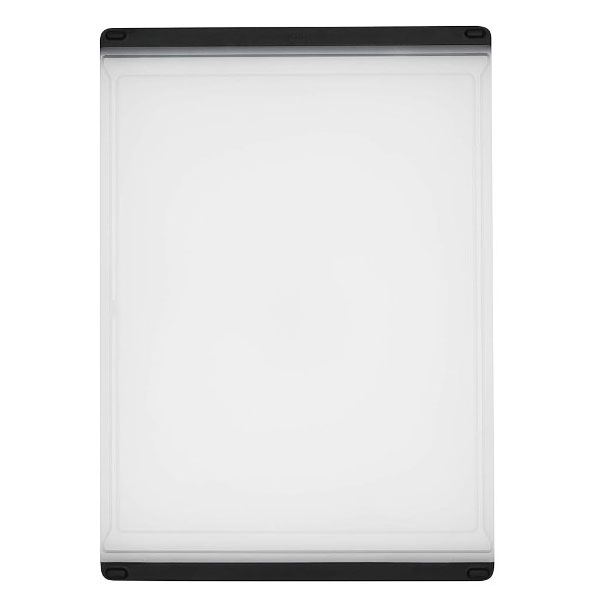
The OXO Good Grips cutting board is the best we tested. It's a food-grade board, yet lightweight and with a non-porous surface that doesn't trap odors or stains. Its non-slip pads ensures it remains firmly in place on your countertop, keeping it secure.
Read more below

John Boos wooden cutting board is a solid and professional option, with a lip to sit on your countertop. It also has a handy groove to catch liquids. This attractive cutting board is available in natural maple and it's can be reversed to make use of both sides.
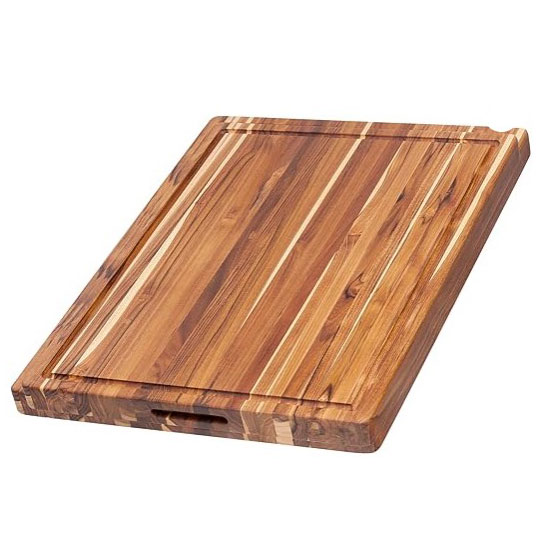
This teak cutting board provides an expansive surface to work on and is easy to clean away tough stains. Plus, you'll send less time maintaining this chopping board, as teak requires less oiling than other wooden boards.
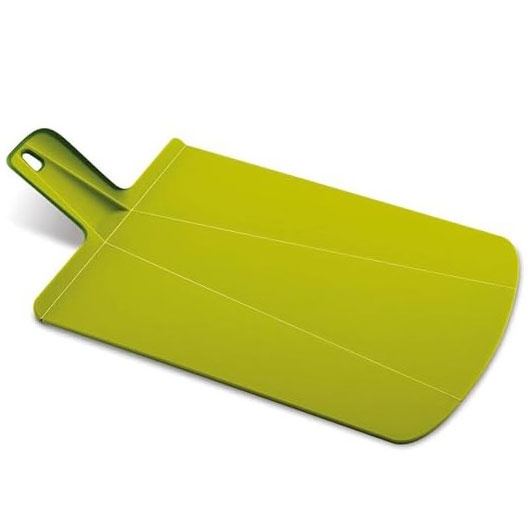
Save time with your food preparation and slide your chopped ingredients straight into your pot by simply folding in the sides of the chopping board. The board is lightweight and made of durable plastic with a soft handle grip.
Read more below
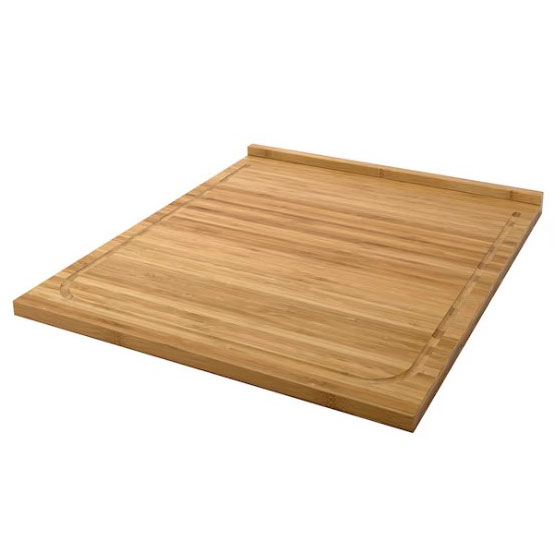
This attractive bamboo cutting board has a spacious surface and built in canal for juice. It also features a lip edge to allow you to anchor the board to a countertop. It performed well in our tests and tough stains were cleaned with ease.
Read more below
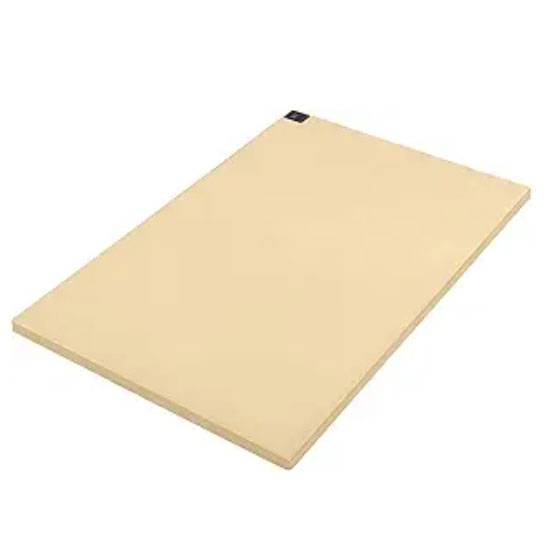
This high-density cutting board is made from anti-microbial rubber and is ideal for multiple prep tasks. It's a heavy board, but also delivers a heavy-duty performance. It has a non-slip surface and doesn't absorb liquids, bacteria or odors.
Read more
About us
Why you can trust Tom's Guide

In my time I’ve owned a whole array of chopping boards and have chopped, diced and sliced my way through a mountain of protein, fruit and veg. I also know that some require a little more tlc to look after than others, with wooden boards requiring a regular oil to stay in tip top condition. So, apart from recommending the best cutting boards, I also take into account how easy they are to clean and care for. And I certainly know that owning one chopping board is never enough to cover all tasks.
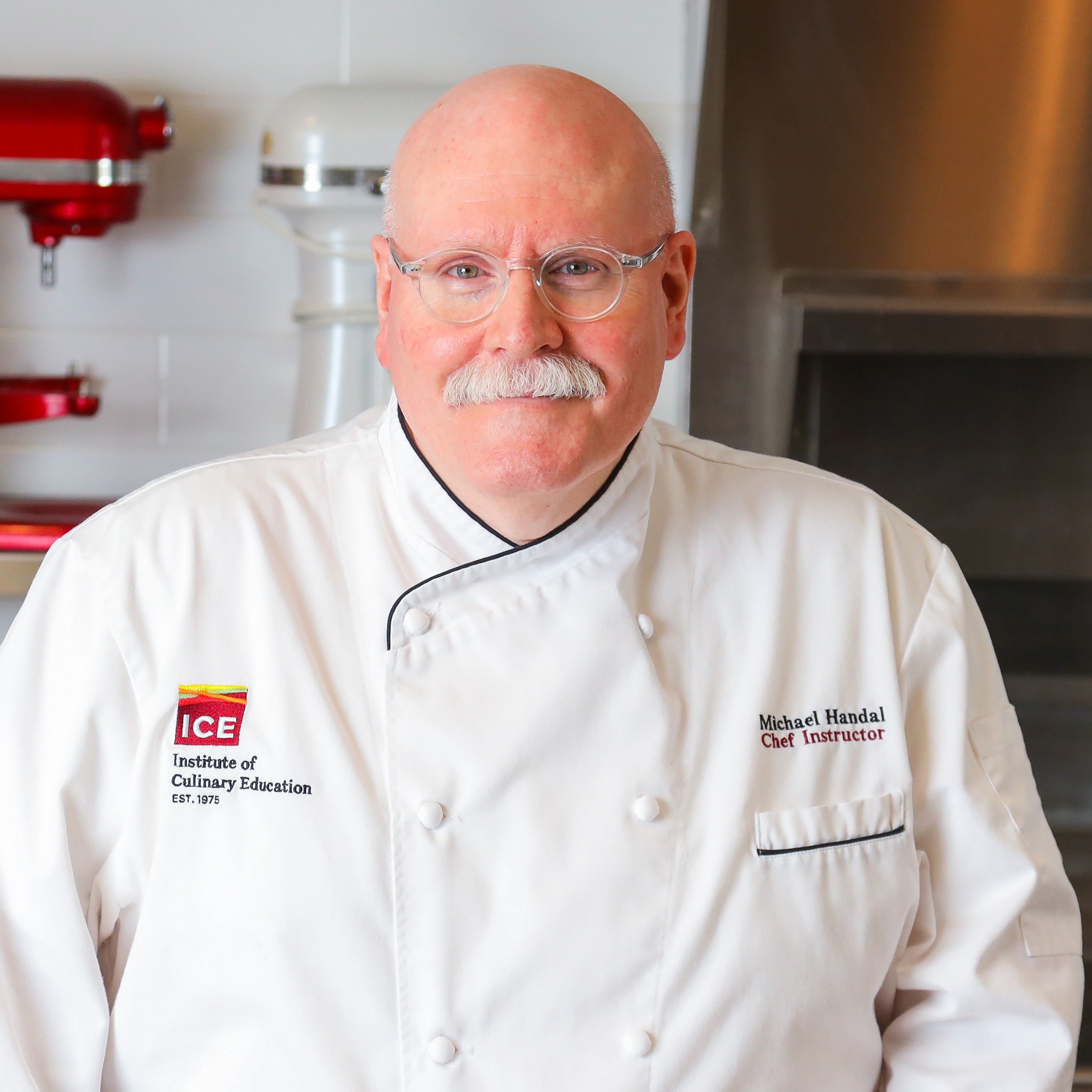
Michael Hanal is chef instructor at the Institute of Culinary Education and is recognized by the American Culinary Federation as a Certified Chef de Cuisine (CCC) and a Certified Culinary Educator (CCE). His training has been grounded in French cuisine, with everything in his career pointing towards teaching others how to cook professionally.
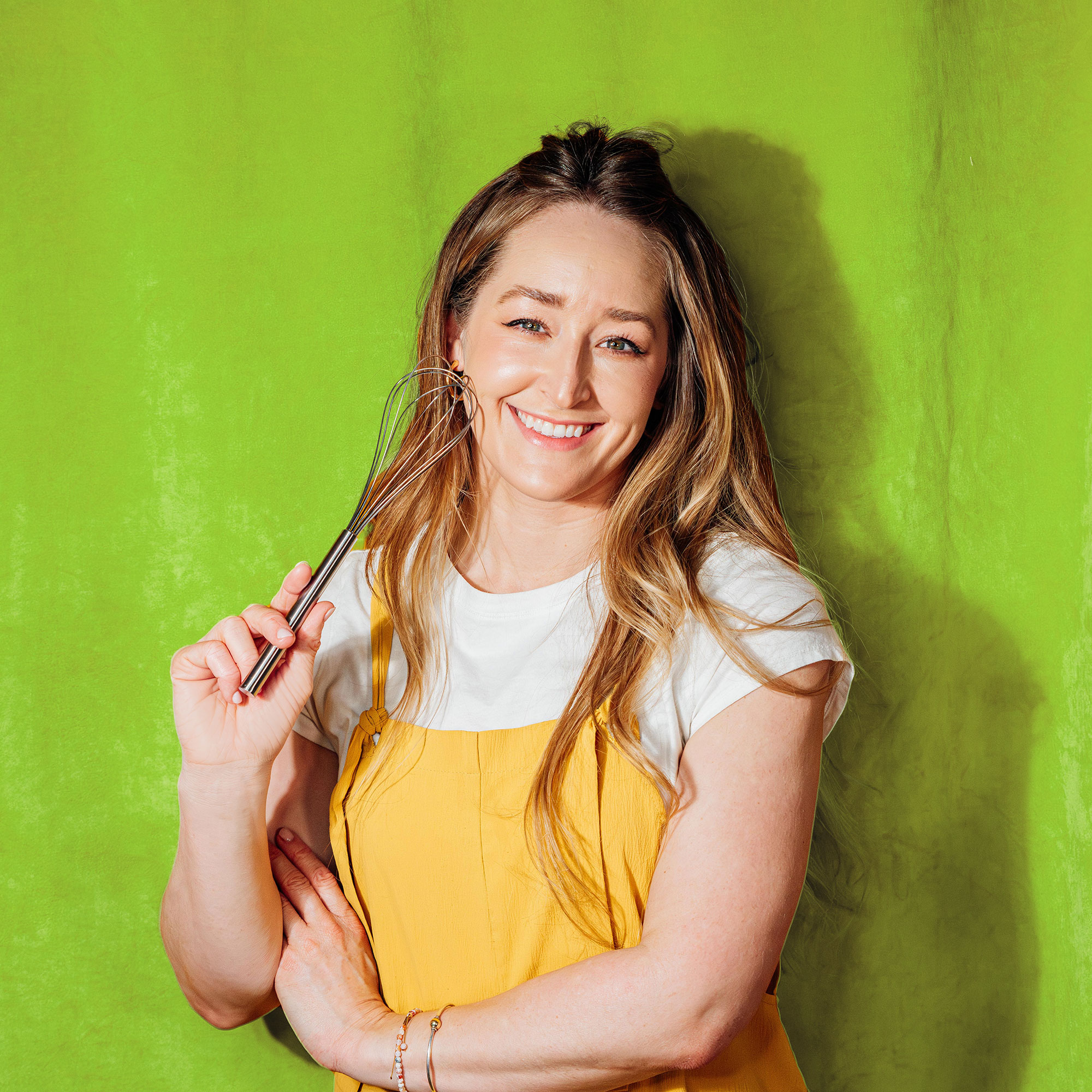
Sarah Bond is a vegetarian food blogger, author and the creative force behind Live Eat Learn. As the chief recipe developer and photographer, Sarah combines her passion for nutrition with her expertise in sensory science to craft approachable and flavorful vegetarian recipes. She holds a Bachelor’s Degree in Human Nutrition from Penn State and a Master’s Degree in Sensory Science.

JD Alewine loves to cook and is part of a husband and wife team at Them Bites, where they work together to create recipes and share the history behind them. JD is a former sushi chef and now an artist and digital marketer who loves to share his experience with working with food.
The best cutting boards you can buy today
Here are the best cutting boards you can buy right now based on our comprehensive testing. Scroll on for our full in-depth reviews.
Best overall
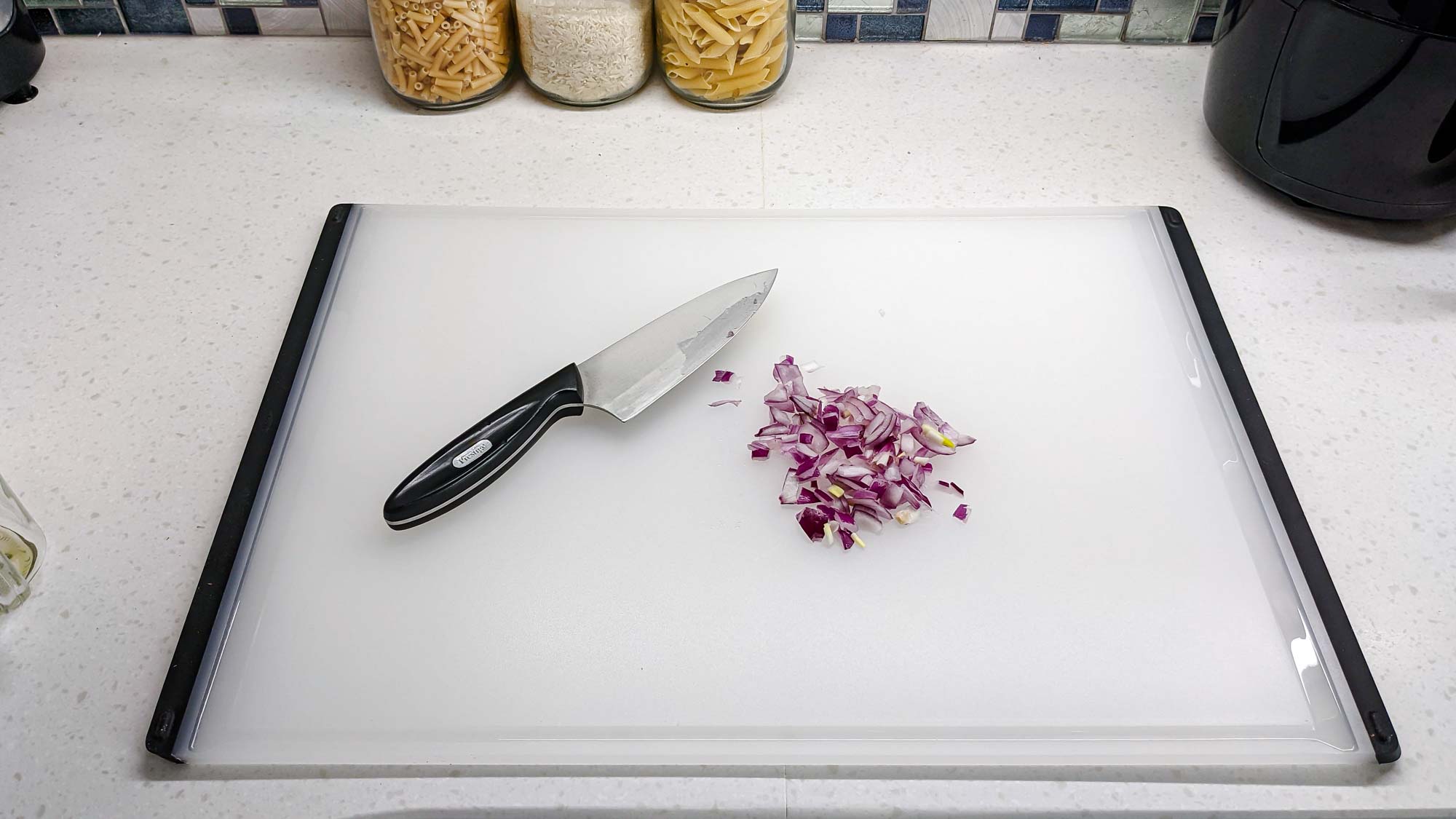
1. OXO Good Grips Carving and Cutting Board
Our expert review:
Specifications
Reasons to buy
Reasons to avoid
The OXO Good Grips Carving and Cutting Board is the best cutting board we tested. It’s well constructed from a food-grade, hard plastic composite, making it solid yet lightweight. This also means it can withstand heat, which is handy if you want to carve your poultry while fresh out of the oven.
We love the non-porous, translucent surface that doesn’t trap odors or stains from pigmented foods. In fact, it performed well in all of our tests where we chopped ‘staining’ vegetables such as beets, red onions, oranges and carrots. After each test, there were no stains in sight while any residual juice sat on the surface. What’s more, the OXO Good Grips has a convenient drip-catcher to prevent any run-offs, so you can simply pour out any juices from the corner.
This cutting board is easy to use, and thanks to its non-slip pad, it remains sturdy and secure during cutting. The soft grip edges make it easier to lift and carry around, while both sides are usable, with one side being smoother than the other. However, we found that cutting raw meat on the smoother side was more challenging as there was less grip on this surface. The size of the board is rather large, so suitable for large prep tasks or cutting multiple fruits and veggies at once. Bear in mind the size may be too big for smaller countertops at 21 inches long.
Similarly, while it’s dishwasher safe, it could be too big to fit in the lower-rack snugly. In any case, it’s light enough to carry to the sink and handwash in seconds. While it may not have the ‘wow’ factor in appearance, its quality, convenience and ease of use makes it our top pick.
Best wooden
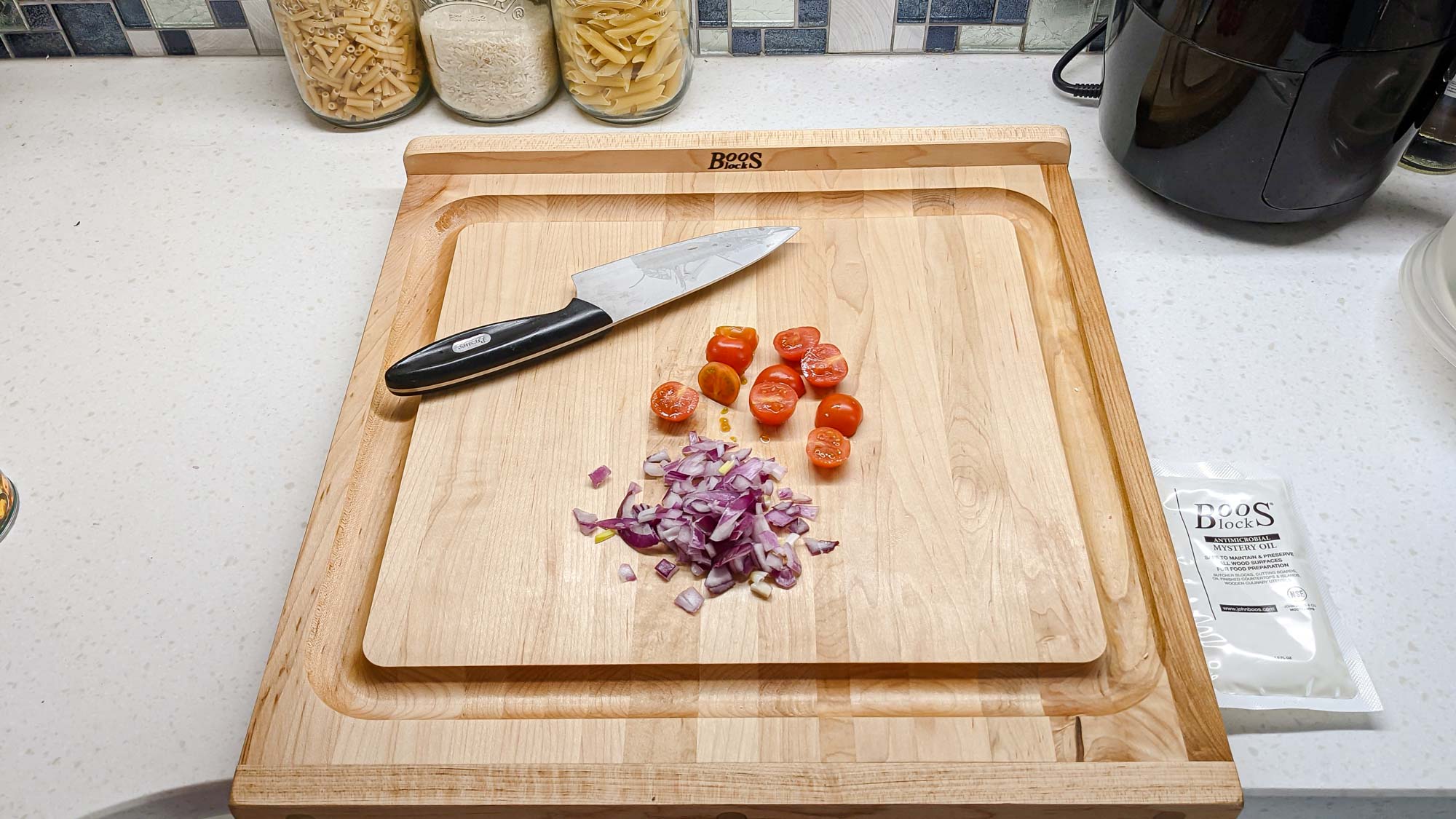
2. John Boos Maple Countertop Cutting Board
Our expert review:
Specifications
Reasons to buy
Reasons to avoid
If you’re after a heavy-duty, professional grade cutting board, this John Boos wooden board is a great option. As one of the best cutting boards, it’s solidly-built in a natural, maple wood, and designed with a lipped edge to grip onto the countertop. This gives it extra stability when chopping multiple prep tasks. In addition, it has a juice groove to catch any oils or liquids that may run off, and the board is reversible too.
Before first use, you must treat with the Boos ‘mystery oil’ provided or a natural unbleached beeswax and food grade mineral oil. We found the surface smooth and solid, and we were impressed by its non-staining abilities (even with beets!). The convenient lipped design made it easy to use, and it remained stable throughout our chopping tests. Plus, there were no knife dents or nicks that you’d expect to see on a wood grain.
Bear in mind, at 13 pounds the board is extremely heavy to lift and handle, and was one of the heaviest we tested. As it’s hand wash only, this makes it difficult to lift to the sink and clean properly.. You also need to frequently treat the board after use to protect the wood and prevent it from cracking over time. While some people may find this a little time-consuming, how well you care for it will make it last the distance. What’s more, it looks attractive and will look great in any kitchen.
Best professional
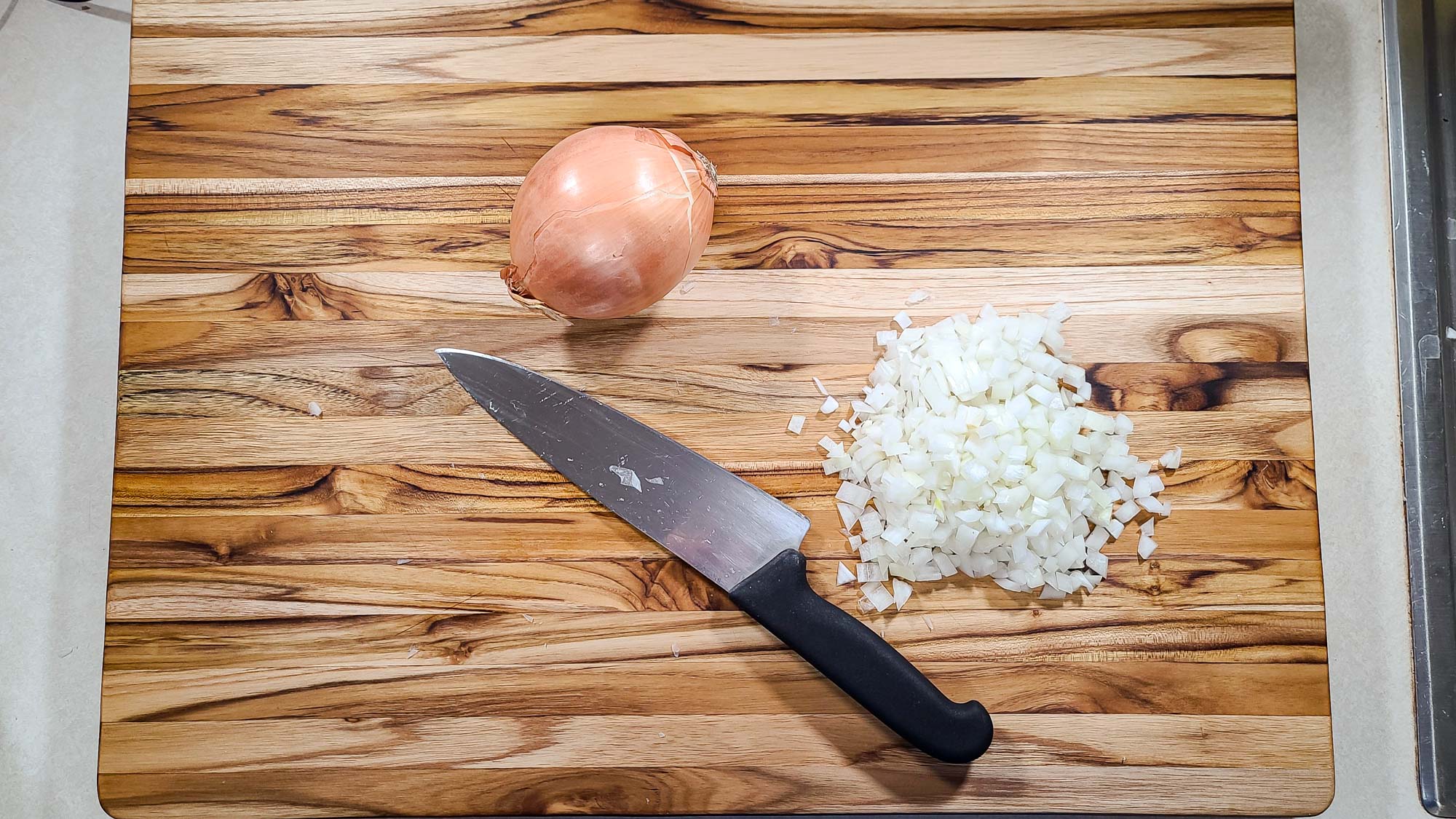
3. TeakHaus Professional Cutting Board
Our expert review:
Specifications
Reasons to buy
Reasons to avoid
With its medium hardness and innate water resistance, teak would seem an ideal wood for cutting boards—and TeakHaus’s heavy-duty entry backs this up making it one of the best cutting boards.
Working with this stunning, edge-grain board is a snap, thanks to its expansive dimensions that simplify prepping and arranging multiple ingredients at once. All but the deepest cuts tend to vanish on the rich, dark surface; cleanup is a dream, with tough stains (like chipotle chiles in adobo) wiping away with just hot, soapy water; and because teak needs less oiling than other woods, it’s as low maintenance as cutting boards get.
Note, though, that the smallest version of this board measures 16x12x1.5 inches and weighs 10 pounds, and the largest comes in at 24x18x1.5 inches and 15 pounds. Getting one that’s too big will complicate cleaning, storing, and even just lifting it. In addition, teak’s high silica content may accelerate the dulling of your knives over time.
But find your perfect match and you may just discover, as we did while testing, that TeakHaus’s cutting board can solve many of your cooking problems.
Best folding
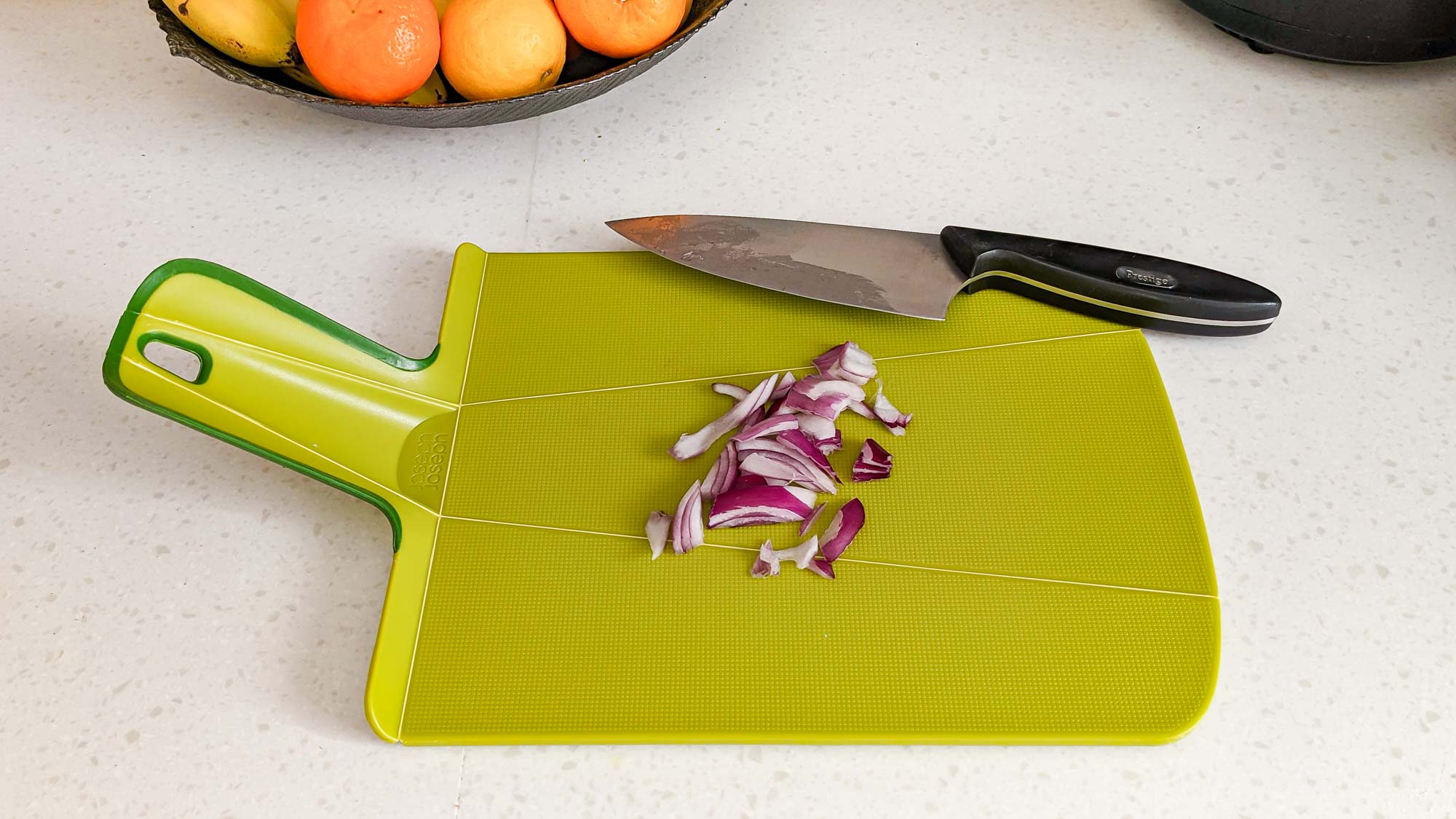
4. Joseph Joseph Chop2Pot Cutting Board
Our expert review:
Specifications
Reasons to buy
Reasons to avoid
The Joseph Joseph Chop2Pot Cutting Board will save precious time when it comes to quick, daily prep jobs. Its folding design means that once you’re finished chopping, you simply squeeze the handle to fold the sides in, and then you can pour the ingredients directly into your pot without spillage. Alongside that clever feature, it’s constructed in a durable plastic with a soft grip handle, non-slip feet and hanging eyelet. This makes it lightweight to carry around and ideal to store, especially if you lack the space to display a large cutting board.
In our tests, we liked the textured surface that made chopping fruit, vegetables and raw meat easy to cut without pieces sliding around. However, one thing to ensure is that the grip is flat on the countertop to prevent the board from moving out of place, otherwise this could be a safety hazard.
In addition, veggies such as beets and red onions didn’t stain the plastic, however, oranges left a puddle of juice sitting on the surface, which was inconvenient to dispose of. Although the Chop2Pot is easy to clean with soapy water and is a convenient size to fit in the dishwasher. Overall, the Chop2Pot is one of the best cutting boards for smaller prep tasks only, as it will not hold plenty of food. I found this was the case when chopping various veggies at once. Although it does come in three sizes to suit your needs. The main selling point here is the handy folding feature that will certainly make cooking a lot more convenient.
Best value
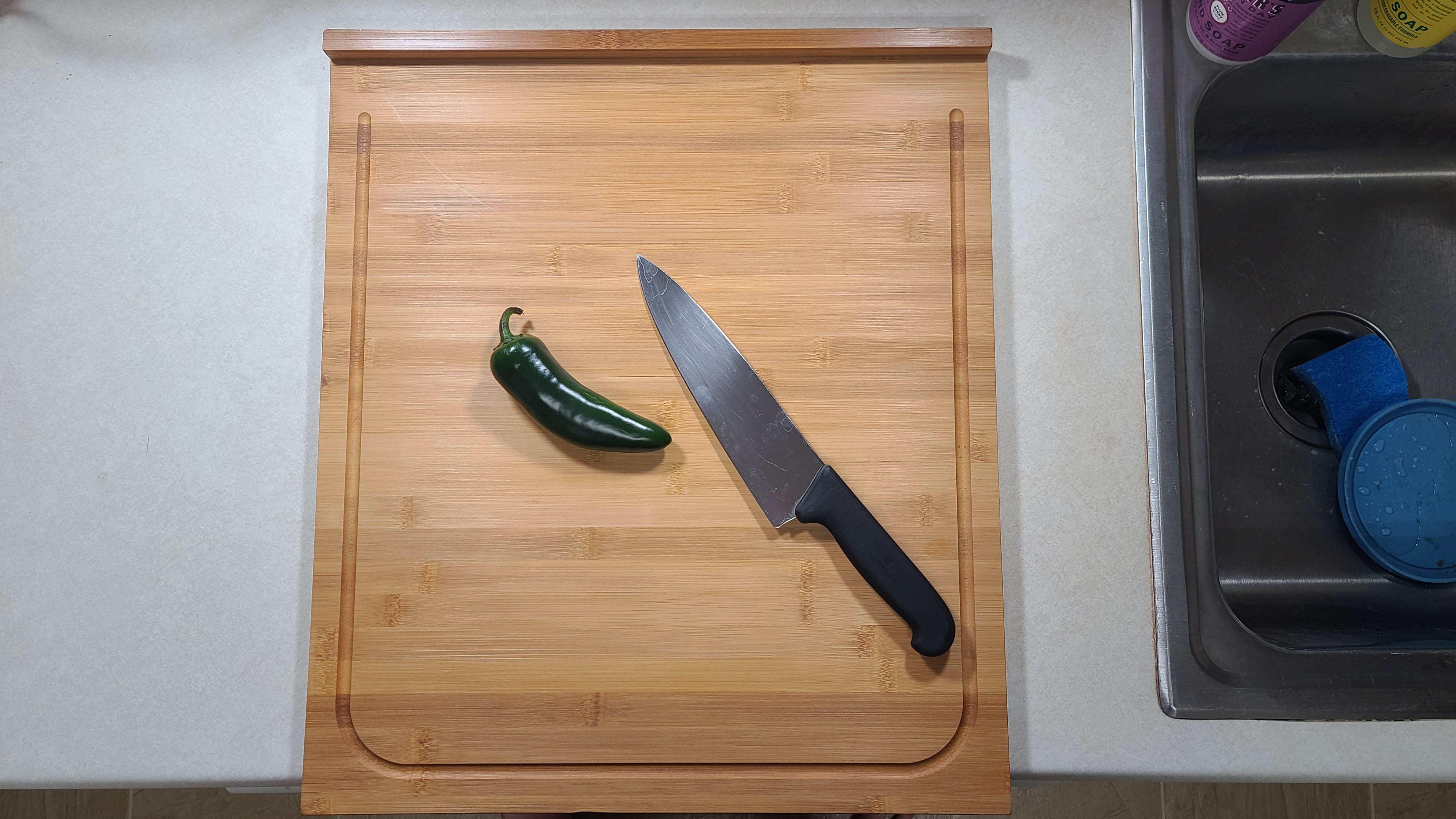

5. IKEA Lämplig Chopping Board
Our expert review:
Specifications
Reasons to buy
Reasons to avoid
Though bamboo doesn’t instantly come to mind when I think of Sweden, Ikea’s Lämplig Chopping Board may change that. This thoughtfully designed cutting board sports a couple of handy, uncommon features: a milled canal on one side for catching juices and a single raised edge that either anchors the board to the counter or acts as a mini-backsplash, depending on positioning.
In our tests, the Lämplig proved highly capable whether mincing herbs, chopping up vegetables, or slicing pizza, with cuts mostly disappearing into the warm-toned bamboo surface. We even found that tough stains like chipotle chiles in adobo could be washed away with just hot, soapy water.
Only two things hold back the Lämplig. The first is that the canal only sits on the top-side with the edge, which limits the reversibility. The second is the board’s otherwise laudable size: at 18x20.8x0.8 inches, it gives you plenty of room, but it’s too big to fit under standard-height cabinets if you stand it up to dry or season. If you can put up with that, though, you won’t find too many more inconveniences with the excellent Lämplig.
Best for large prep
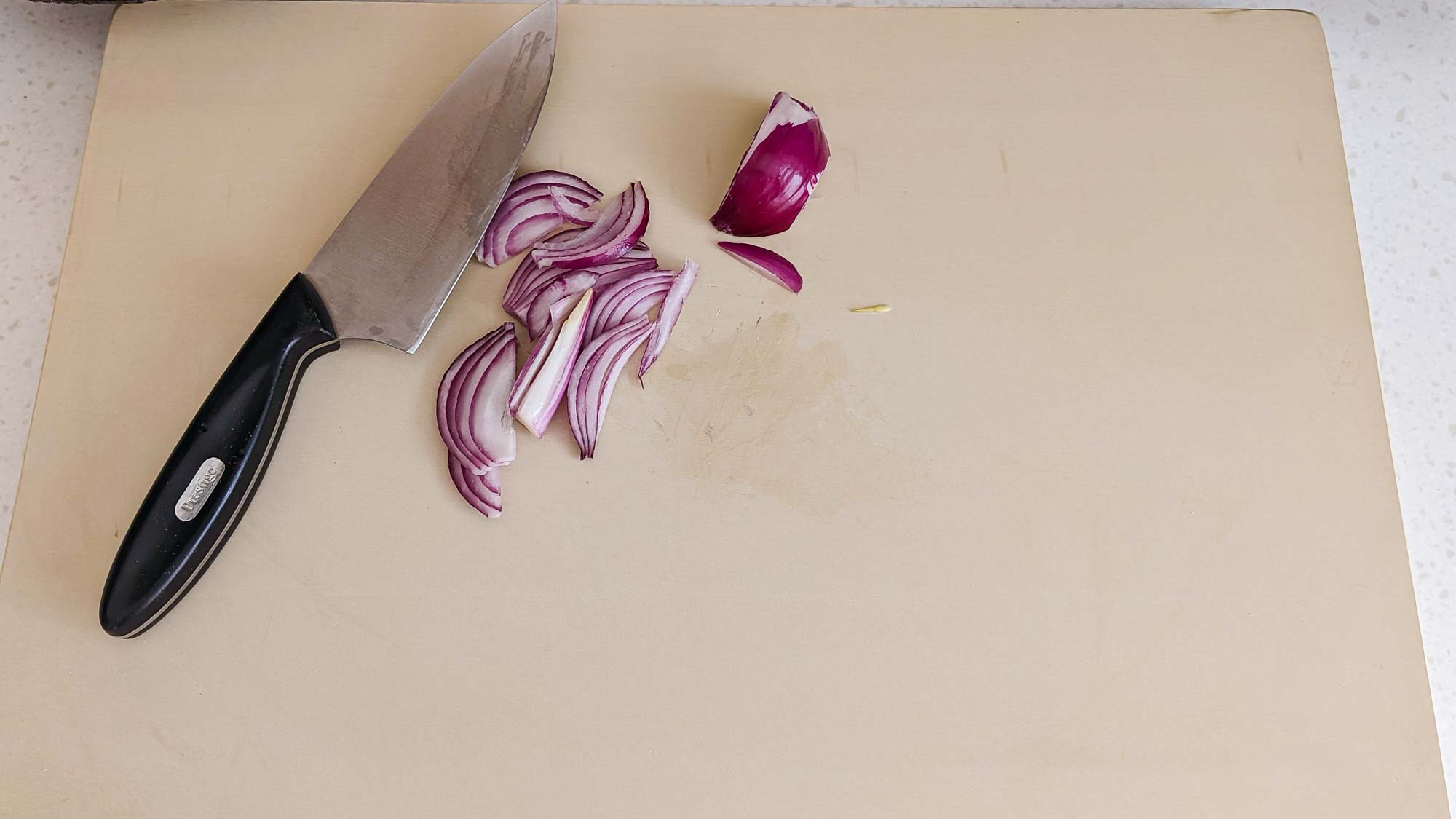
6. NoTrax Sani-Tuff Premium Rubber Cutting Board
Our expert review:
Specifications
Reasons to buy
Reasons to avoid
If you’re after a heavy-duty cutting board, the NoTrax Sani-Tuff is built like a workhorse. Constructed from 100% high density, anti-microbial rubber compound, it’s designed to be durable with a non-skid surface. This also means that the surface doesn’t absorb liquids, bacteria or odors.
It’s very heavy, so lifting and carrying it around the kitchen may be an issue for some. However, the solid and sturdy design makes cutting vegetables and raw meat a much easier task, without sliding around. Generally, we found the NoTrax cutting board easy to use, performing well in our ‘staining’ tests, with hardly any absorption of pigment from the beets or carrots. Its large surface area is also sufficient for large prep tasks or multiple jobs at a time, which is why it’s one of the best cutting boards right now.
The only disappointment was the visible knife marks on the surface of the board. However, this can be resurfaced with sanding if you have a little patience. In addition, cleaning is hand wash only and simple to do with soapy water, but may take some effort due to its size and weight. The NoTrax cutting board is also available in different shapes and sizes to suit your cooking needs. It comes at a steep price, but for that you get a heavy-duty board which is built to last.
Best lightweight
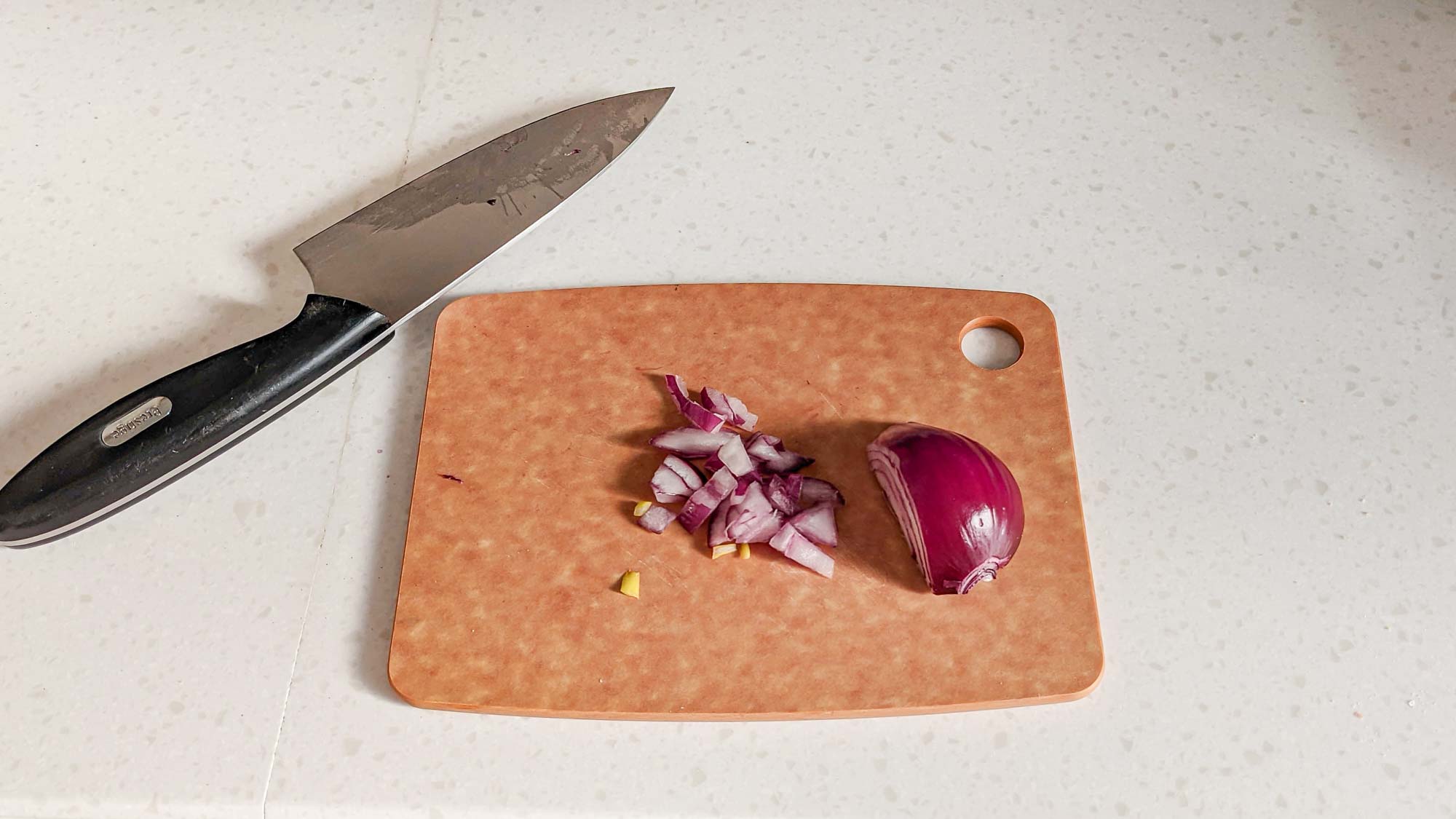
7. Epicurean Kitchen Series Cutting and Chopping Board
Our expert review:
Specifications
Reasons to buy
Reasons to avoid
If you favor a lightweight cutting board over big and cumbersome, the Epicurean Kitchen Series Cutting and Chopping Board is ideal. It’s constructed from RichLite paper composite, meaning it’s non-porous, heat-resistant and eliminates lingering odors and bacteria. Best of all, it is super light to carry at 1.5 pounds, which is ideal if you don’t want to struggle with a hefty cutting board.
While it’s not as chunky as the best wooden chopping boards, don’t be fooled. It does have a strong, solid surface and if you can overlook the ‘clacking’ noise as you chop, you can quickly slice and dice small portions with ease. More importantly, it performed well in our ‘staining’ tests, thanks to the non-porous surface. However, it was too small and awkward to cut raw meat portions, and did display a few knife nicks after testing.
The only thing missing from the Epicurean cutting board is the addition of non-slip feet or grips, which was disappointing. This would help it hold firmly in place on the countertop as it tends to move from time to time. We also noticed that the board is considerably flat, so it would benefit from a drip-catch feature for any liquids that run-off. This was the case after cutting juicy oranges and tomatoes. Having said that, the board is very easy to clean and can also be placed in the dishwasher. What’s more, it’s the perfect size to handle, user-friendly and can be hung up for storage. The Epicurean cutting board is ideal for small prep jobs or for households that won’t necessarily need a massive cutting board.
Best set
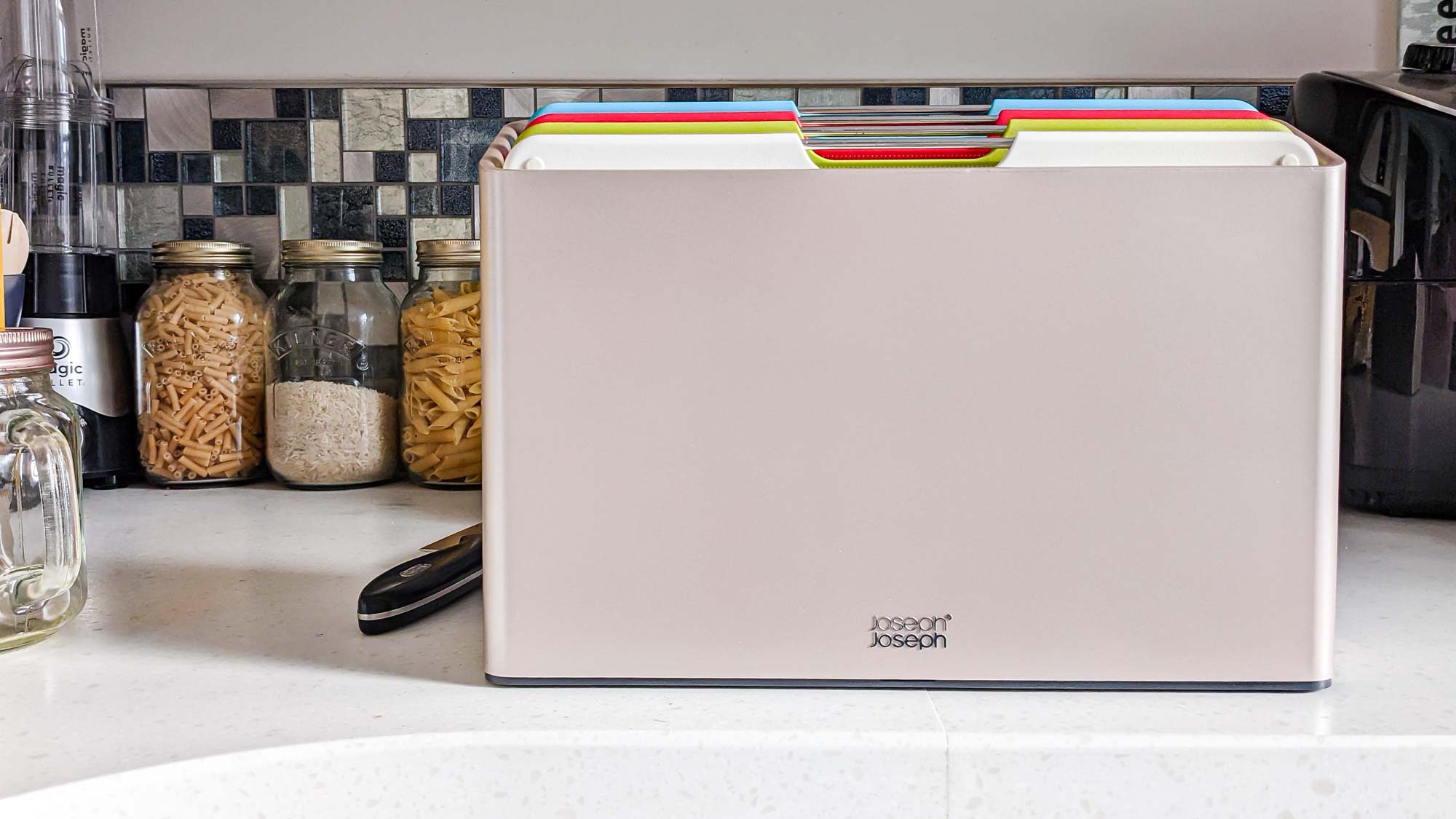
8. Joseph Joseph Folio Set of Chopping Boards
Our expert review:
Specifications
Reasons to buy
Reasons to avoid
If you're a keen cook who often uses multiple cutting boards at once, the Joseph Joseph Folio cutting board set is a great buy. The four colour-coded boards are tiered in a stylish storage case, with an easy-to-grab, stainless steel handle to easily lift out. This is handy for when you want to select a board to quickly slice and dice ingredients. Each board is made from durable plastic and is lightweight to lift and carry around.
We liked the double-sided, textured surface for better grip, while it also ensured no knife marks after chopping. The non-slip pads on the corners make each board extra sturdy on the countertop too. As a result, it performed well, allowing us to cut fruit, veggies and raw meat with ease. The board didn’t stain when cutting beets and red onions either.
Another bonus to having colour-coded boards is you can assign different boards for veggies and raw meat. That way, you can avoid the risk of cross-contamination and have more flexibility. What's more, the boards are easy to clean with soapy water and are dishwasher safe.
We liked the Folio's user-friendly and versatile appeal. Not only is it ideal for everyday use, but it makes for an attractive feature to your kitchen. You also have the option of choosing from two sizes and a range of stylish colors to suit your tastes. However, the surface is probably not ideal for large tasks such as carving a chicken or other meats. In which case, you’d need a bigger cutting board for convenience. A minor negative is the storage case is prone to fingerprints, oil splashes and marks, so you’ll need to clean it often to keep it in top shape.
Best sustainable
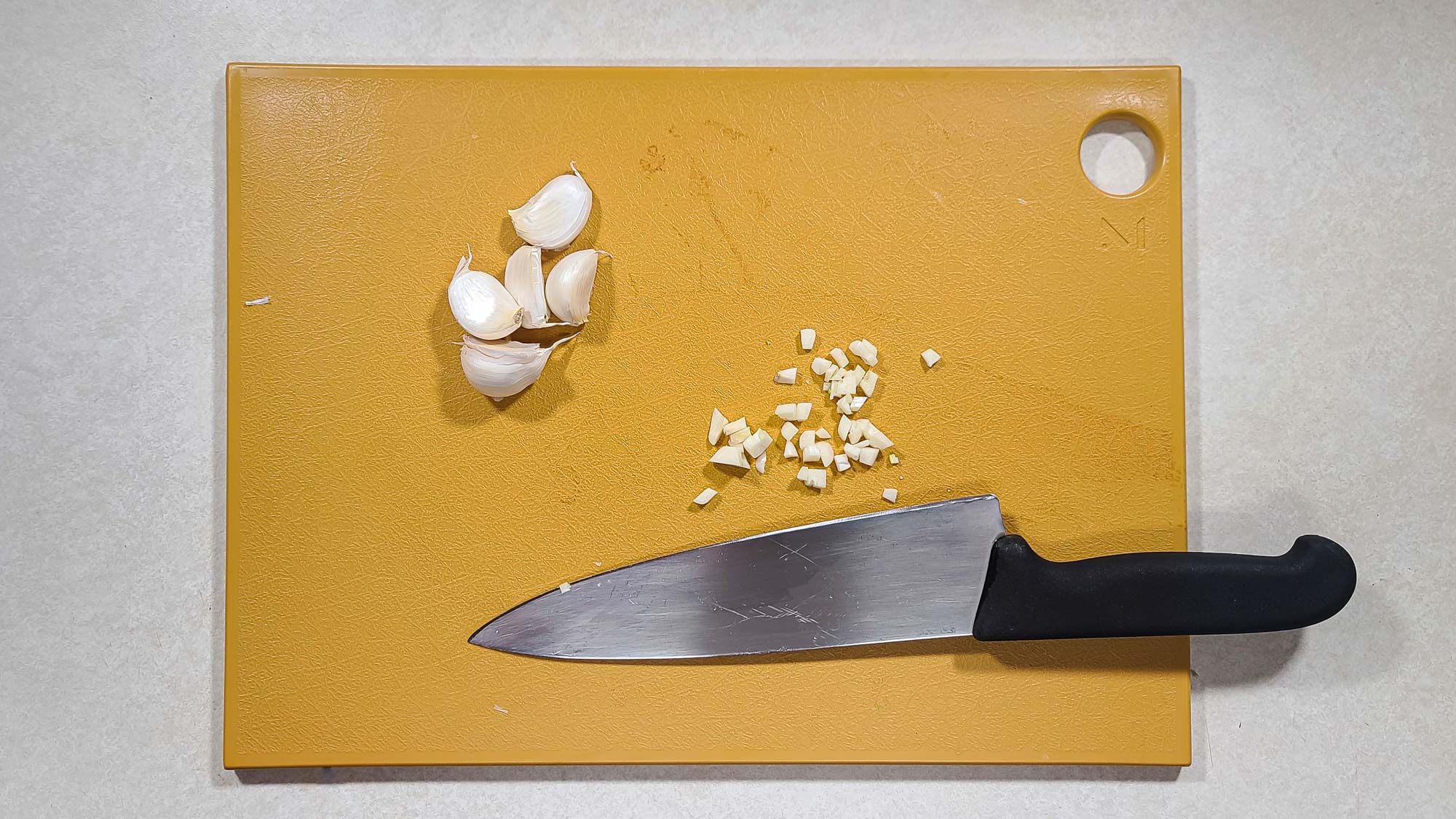
9. Material The reBoard
Our expert review:
Specifications
Reasons to buy
Reasons to avoid
If you’re a home chef who loves the environment as much as your endive, Material’s The reBoard makes a compelling addition to your kitchen. This BPA-free cutting board is made with 75% recycled plastic and 25% renewable sugar cane, so you can feel good about where it came from and what has gone into it. Luckily, you can also feel good about it as a cutting board.
Measuring about 14.8x10.8x0.4 inches and weighing 1.9 pounds, this reversible board is neither huge nor hefty, but it offers sufficient slicing and chopping space. Its heavily textured surface keeps it anchored to the counter and makes most of your knife marks invisible. We experienced no trouble dicing onions or mincing jalapenos, and chipotle chiles in adobo sauce couldn’t stain it. Even so, it’s dishwasher safe, with a hole in one corner that makes it easy to both store and carry.
If you care about how it’s likely to fit in with your kitchen decor, the board comes in five eye-grabbing colors. But simply caring about either the environment or just having a fine, if small, cutting board to add to your arsenal is more than enough reason to consider The reBoard.
Best for knives

10. Shun Hinoki Cutting & Carving Board
Our expert review:
Specifications
Reasons to buy
Reasons to avoid
This edge-grain cutting board from Shun Cutlery, a major Japanese knife manufacturer, is a comfort and pleasure to use. It’s made of hinoki, a Japanese cypress with natural antibacterial and antifungal properties well suited to the kitchen; Shun also touts the ability of the citrus-scented “medium-soft wood” to “preserve the edges” of your cutlery. We found it indeed had a faint scent, but we were interested to see how it handled everyday use.
Our testing bore this out, and the board excelled at all normal cutting tasks while also cleaning up stain-free, which is why it’s one of the best cutting boards. (Shun recommends wetting the board before each use to facilitate this, which you may not always find desirable.) The board looked fairly beat up by the end of our first round of tests, though, and had acquired a myriad deep, visible cut by the end — that’s the softness of the hinoki for you. At least the board is reversible, although only one side has the handsome Shun logo branding in the upper-left corner.
Whether this board will prove beneficial to your knives or a solid long-term investment will depend on how (and how much) you cook. It’s certainly soft on the blade, but you need to be prepared for some knife marks on the surface as a consequence.
How we test the best cutting boards
We called in ten cutting boards of varying materials, sizes and designs to see which could deliver in every respect. During our testing process we considered the following criteria to help us judge each cutting board's merits, not forgetting any downsides.
Grip
First, we looked at how easy it was to cut fruit, vegetables and raw chicken on each surface, and whether it had sufficient grip. This also included how the cutting board performed on the countertop and whether it felt secure. Did the board slip and make it difficult to use, or did it stay firmly put?
Stain resistance
We cut vegetables with strong pigmentation such as beets, red onions and carrots to see if the surface would stain, giving us a good indication of how porous or non-porous each cutting board was. Ideally, we were looking for cutting boards that were non-porous, making them more hygienic, and also easier to clean.
Knife test
While cutting a range of different food items, we also considered how durable the board was by testing for knife dents or nicks. We looked for signs of damage that the sharp blade could cause.
Durability
Apart from the knife test, we also dropped each chopping board onto the floor to see if it would break easily. Luckily, none of the cutting boards chipped or showed any signs of damage.
Size
The size of the cutting boards varied and we considered if this would cause a problem, either making them too big for small work spaces, or not sufficiently large enough for standard chopping tasks.
Extra features
During the testing, we also considered the benefit of extra features. For instance, did a folding chopping board make sliding food into a pan much easier, and how effective were outer lips designed to catch juice run off?
Cleaning
We also tested how well the boards cleaned up, and whether they could be placed in a dishwasher, and if so, how well they cleaned. Plus, what extra maintenance did the wooden boards require to keep them in tip-top condition?
For more kitchen tools, check out the best garlic presses: Tested and rated.
How to choose the best cutting board
With the help of an expert panel, we’ve gathered advice on the pros and cons of different cutting board material.
The panel
Michael Handal, Chef at the Institute of Culinary Education
Sarah Bond, Food Scientist, Nutritionist, and Recipe Developer at Live Eat Learn
JD Alewine, former Sushi Chef and Cuisine Expert and Co-owner at Them Bites
Wooden chopping boards
Wooden boards can be more aesthetic than other types and can look attractive in a domestic kitchen. Michael Handal, Chef at the Institute of Culinary Education, says that maple, cherry, and walnut are all popular choices. He particularly favors wooden chopping boards, such as those from John Boos, as “they are functional and quickly become part of your kitchen.”
Sarah Bond, Cuisine Expert and Co-owner at Live Eat Learn, cooks for a living and favors wood over any other cutting board material, “It’s gentle on knives, naturally antibacterial, and feels sturdy, although it does require regular maintenance, and it isn’t dishwasher safe.”
However, Handal mentions that serrated knives don’t fare so well on wooden boards, as they can tear the surface of the wood, and he suggests using a separate board for cutting baguettes and large loaves of bread.
Wooden chopping boards can be pricey, but Handel advises you shouldn't let price put you off, “They do require an initial investment, but think of them along the lines of kitchen equipment such as a KitchenAid stand mixer, or a Vita-Mix blender — you will have them around for many years to come."
Cleaning and maintenance
If you do place a wooden cutting board in a dishwasher the high heat and steam will cause it to warp, and therefore you should always clean a wooden board by hand.
However, JD Alewine, former Sushi Chef and Cuisine Expert and Co-owner at Them Bites, says this is its only disadvantage. “The only downside to wood is that it’s not dishwasher safe, and this is why plastic is used so often in a commercial setting. In a commercial setting, you don’t have time to hand wipe, sanitize, and dry a cutting board.”
Handel says, “A quick clean with a soapy sponge and rinse with hot water should be fine.” He suggests drying wooden boards on one edge to allow air to circulate.” If a board has rubber feet, this is great, as air may easily circulate around the board,” he adds.
At the end of each day in the kitchen, Bond wipes down her wooden cutting board and then sprays it with a little vinegar before rubbing in some vegetable oil to rehydrate it. Meanwhile, Handel suggests using board wax, a combination of food-safe beeswax and mineral oil. “It should provide a layer of restorative protection after a week or two of regular use,” he says.
He also advises that any small cuts and scratches can be sanded and then treated with the board wax in the same way.
Plastic cutting boards
Bond favors plastic for its hygienic and non-porous qualities, but it has disadvantages. “Plastic is great for raw meat since it’s easy to sanitize in the dishwasher, but it can blunt knives faster and tends to slide around unless it has grips.”
Handel also notes the issue plastic can cause to knives, “Sharp, newly honed knives may stick on the surface.”
Plastic cutting boards are also susceptible to deep scratches. Handel explains, “Unlike the self-healing characteristics of wood, these scratches remain on the surface and may harbor bacteria. Accumulated scratches will cause plastic boards to need replacements more frequently.”
Alewine is also concerned about plastic boards retaining bacteria and the risk of plastic particles being released into food.
However, Handel says he would choose plastic over wood for some uses, “It would be my choice as an extra utility cutting board to use with a serrated knife or for heavy-duty use, such as using a cleaver for advanced meat fabrication.”
Cleaning and maintenance
Unlike wooden boards, which require a fair amount of maintenance, plastic boards are easier to look after and can go straight in the dishwasher. But if you prefer to wash your board by hand, Handel says that plastic can withstand a vigorous scrub with most kitchen cleaners, including bleach. Because of this, it makes it easier to remove tough odors. Plastic boards also dry more quickly than wood and can be wiped with a cloth and stored straight away.
Rubber cutting boards
Rubber boards are much more knife-friendly than plastic or composite, and Bond adds that they are also “non-slip and easy to clean, making them ideal for professional kitchens.”
Handel adds, “This surface also allows for sanding, so shallow cuts may be removed with a resurfacing of the board.”
However, the material can cause the knife to stick. Handel explains, “The softer rubber material does provide a somewhat friendlier surface for knives, but the flip side is that, as with most surfaces, a very sharp or freshly honed edge may stick on the surface of the board.”
One of the main things to look out for when buying a rubber cutting board is that they are heavy, “even heavier than wooden boards,” says Handel. This is one reason why they tend to be kept for professional rather than domestic use.
“A rubber board would be a good choice as a second utility cutting board for use with a serrated knife or for heavy-duty knife use,” says Handel.
Cleaning and maintenance
Rubber is susceptible to warping, so Handel suggests they should be hand-washed rather than being placed in a dishwasher. “Most rubber boards are quite sanitary and compatible with standard kitchen cleaners, including bleach-based products,” he explains.
As with plastic boards, any issue with odors is reduced as rubber can withstand a good clean.
FAQS
Is a juice canal worth it?
If you’re handling anything with high liquid content, Bond says a cutting board with a juice canal is definitely worth it, as it saves your counters from getting messy.
Handel adds that a meat groove can be helpful when carving large roasts, but that most properly rested proteins shouldn’t be too messy. And he adds, “On smaller boards, the groove can trap smaller, diced vegetables, herbs, etc, and might be seen as a hindrance, so it’s up to personal preference.”
What's the best way to stabilize a cutting board?
Some materials will stay put on your countertop more easily than others, with Alewine saying that composite and rubber cutting boards have the greatest stability. However, there is an easy solution to keep a cutting board in place. Handel suggests placing a damp piece of paper towel or a rubber mat, such as a shelf liner, underneath the board to keep it stable. This will stop the danger of the board moving around when you are using a sharp knife.
How to remove odors from a wooden chopping board
Wooden cutting boards can be tricky to clean as they can't be placed in a dishwasher, and won't withstand the tough cleaning products that other material can handle. However, you can still eliminate stains and odors from wood.
“Proper cleaning after each use will prevent stains and odors from remaining on the wood,” says Handel. “For this type of board, odors can be treated with some salt and lemon juice rubbed over the affected area and then rinsed thoroughly.”
If you are working with something especially susceptible to leaving odors, such as fish, seafood, or shellfish, he suggests using a separate board that you can reserve for these specific food types.
Do I need a cutting board with handles?
If moving around a heavy cutting board is a problem, it’s worth looking for one with handles. Otherwise, Handel recommends buying a board with “finger grooves on the side edges of the board. They are very functional and allow for a clean, sleek look.”
Alternatively, look for a cutting board that's composed of a lightweight material, such as a plastic board.
What type of cutting board is the most hygienic?
Bamboo boards are considered the most sanitary cutting boards to use. This is because it absorbs little moisture and is scratch-resistant from knives. In addition, they are more resistant to bacteria than other woods.
Bamboo are also easier to clean and maintain with soapy water.
Why you need more than one cutting board?
Hygiene in the kitchen is paramount because it’s one place where bacteria can spread. For this reason, having a set of color-coded cutting boards for different purposes makes sense to avoid cross-contamination. To make life easy, some cutting boards come in color-coded sets, clearly indicating that they will be used for meat, fish, fruit, and vegetables. You may also find you want another chopping board for foods with strong odors, such as garlic and onions — preventing the problem of ending up with bread that tastes of yesterday’s garlic when cutting a loaf for your morning toast.
Sign up to get the BEST of Tom's Guide direct to your inbox.
Get instant access to breaking news, the hottest reviews, great deals and helpful tips.

Camilla Sharman has worked in publishing and marketing for over 30 years and has covered a wide range of sectors within the business and consumer industries both as a feature, content, and freelance writer.
As a business journalist, Camilla has researched articles for many different sectors from the jewellery industry to finance and tech, charities, and the arts. Whatever she’s covered, she enjoys delving deep and learning the ins and out of different topics, then conveying her research within engaging content that informs the reader. In her spare time, when she’s not in her kitchen experimenting with a new recipe, you’ll find her keeping fit at the gym. In the pool, stretching at a yoga class, or on a spin bike, exercise is her escape time. She also loves the great outdoors and if she’s not pottering about in her garden, she’ll be jumping on her bike for a gentle cycle ride.
